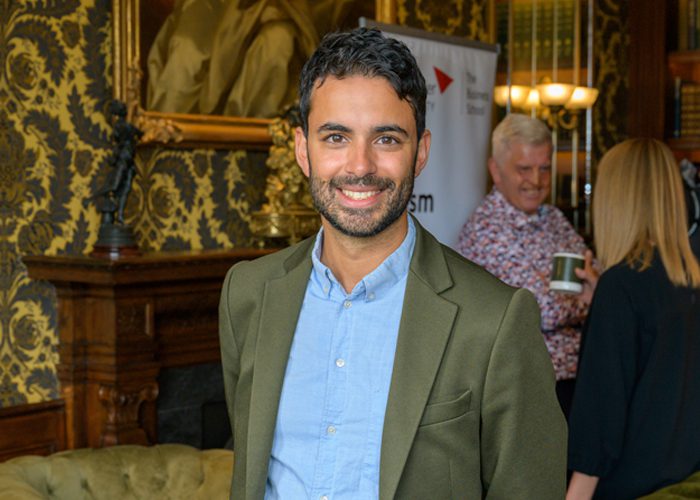TECHNOLOGY pioneers tackling overcrowding at Scotland’s tourism hotspots are hoping the extended Jubilee bank holiday weekend provides the data they need to create a better visitor experience.
A tech startup called Whereverly, one of many companies in Scotland’s burgeoning traveltech scene, is working with Loch Lomond and the Trossachs National Park, Stirling Council and Perth & Kinross Council to address issues that have generated negative headlines in recent years – traffic jams, overflowing bins, inappropriate camping and fires, and disruption to local residents.
A tech platform is being developed which uses data from sensors which count footfall and traffic within the National Park. This will show in real time on a map which areas are busy.
Along with on-the-ground observations added by countryside rangers, this year’s sensor data will be used to train an algorithm so that in future crowded areas and times can be predicted, with visitors offered alternative suggestions for places to go. These nudges could be communicated to visitors via an app, automated social media feeds and variable message road signs.
The project was prompted by the pandemic, which caused many more people to explore the natural environment on their doorstep. Whereverly’s technology, which aims to give visitors a stress-free experience, could be rolled out to other tourism hotspots. Whereverly is already in discussion with other guardians of our natural heritage.
Iain McNeill from Whereverly said:
“We’re using technology to tackle a problem that has come about due to the pandemic. It’s great that many more people are exploring the natural environment closer to home but it is putting areas such as Loch Lomond and Loch Tay under strain. The upcoming holidays will be a significant test and an important opportunity to gather the data we need to train the algorithm we hope to use in future.”
“In developing our product, we have already spoken to a range of users of the national park. Even regular motorhome users were surprised to see the alternative locations that exist within the park, so in future they don’t have to go to the same crowded spots.”
“This is about giving people information to make informed choices, so we can continue to enjoy a booming visitor economy but more evenly spread.”
Josh Ryan-Saha, Director of TravelTech for Scotland, a University of Edinburgh-based project supporting the booming sector, said:
“The work that Whereverly is doing is a great example of the innovation flowing from Scotland’s thriving traveltech sector, perhaps best known for success stories such as Skyscanner. By combining data from sensors with human input from workers on the ground and applying an algorithm we could see an end to the kind of overtourism that has given Scotland a real headache in recent years.”
“Traveltech is all about improving the quality of experience, and it’s exciting that some of the most innovative work in this area is happening right here across Scotland.”
“In addition to Whereverly, Scotland’s sustainable visitor management is benefiting from collaborations with traveltech companies such as Fuse Mobility, which has developed a travel planning app for Loch Lomond and the Trossachs National Park. In the Cairngorms National Park, Wilderness Insights are deploying sensors, developing technology and analytics to deliver real time insights from remote locations.”
“And in East Lothian, Traveltech for Scotland is working with East Lothian Council, on a project using sensors on the area’s beaches to generate real time, geo-referenced, ‘busy-ness’ data via an app. This will enable visitors to understand where less crowded destinations are, how to get to them, and what other attractions and facilities exist nearby.”
Matt Buckland of Loch Lomond and the Trossachs National Park Authority said:
“If not properly managed, large numbers of visitors can put pressure on the natural environment, communities, businesses, and the experience of tourists themselves. There are different ways of addressing these issues and one of them that is currently underutilised is the effective use of technology. Our visitors having access to up-to-date information to allow them to make informed decisions before starting their journey can help to alleviate these issues.”
“This data can also be used by field staff such as the Loch Lomond & The Trossachs National Park Ranger Service to make sure that they can be deployed efficiently. The final use of data is to build an understanding of trends which can influence investment in new facilities and then test the success of these investments. Working with Whereverly and the other partners is an exciting opportunity to introduce a smarter way of managing visitors to Scotland’s beautiful landscape to ensure it can remain special for those who live and work in these areas and the tourists themselves.”
Whereverly’s innovative work highlights the contribution that digital technology approaches can make to sustainable visitor management, serving to support the significant partnership working on this to date, led by VisitScotland, NatureScot and other industry partners including both of Scotland’s National Parks.
Whereverly had responded to a CivTech Scotland Challenge. CivTech is a Scottish Government run Accelerator for digital public services. It was launched in 2016 to inject innovation into how the public sector uses technology to improve the lives of Scotland’s citizens.
